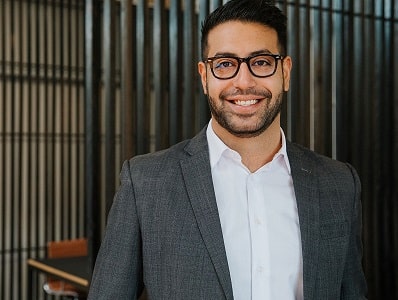By Bion Behdin
Tech is constantly on the move. So much so, that it can be hard to keep up with what models or software updates are coming next. But in this evolving tech landscape, criminals are consistently devising new methods to enact financial crime, including money laundering.
As these technological advancements help to enhance our daily lives, they also open doors for bad actors to use and exploit them for illicit activities.
A Swedish investigation recently revealed that criminal networks had been converting dirty cash into bitcoin to pay for false streams on Spotify. Not only did they then get paid by the platform for these streams, but these false streams led to “an uptick in real streams”, thereby increasing legitimate income. Although the monetary return may not be the most lucrative, it shows how criminals are exploiting unexpected sources.
Using cryptocurrencies has also become an incredibly popular tactic. They have provided bad actors with innovative ways to launder money behind an anonymous mask, replicating traditional methods of placing, layering and extracting money in the online world. And from online trading and crowdfunds to video games and streaming, there are a vast range of channels and possible avenues to do this.
But where tech provides criminals with the means to innovate their tactics, it also gives anti-money laundering (AML) professionals the tools to combat it. There is a continual tussle of fighting tech with tech. As compliance professionals race to stay one step ahead of criminal innovation, how can they use tech to counter illicit activities?
This tech can more clearly illustrate company structures and shareholdings, making it easier for people to understand where control lies
Joined by effective collaboration and efficient processes, the latest advancements in AML technology can act as a robust first line of defence.
It’s important to clearly outline a company’s structure to know who truly owns or controls it, particularly now as the Economic Crime and Corporate Transparency Act ushers in sweeping reforms, which are set to change how Companies House operates. Moving forward, beneficial owners must be verified before they make it into the registry.
Why does this matter? It is adding more complexities to an already complex process. Compliance professionals can become overwhelmed and tired when faced with complicated company structures and chasing after verification documents. This often leads to them not investigating deeply enough, stopping at what appears to be “good enough” rather than seeking to understand the full picture. While often an honest mistake, this lack of deep digging means they might miss important details.
Technology can now gather information straight from public records, reducing dependence on compliance professionals. This not only cuts down on human mistakes but also provides a more comprehensive view.
Additionally, this tech can more clearly illustrate company structures and shareholdings, making it easier for people to understand where control lies. As a result, employees have more time for the crucial tasks of assessing and reflecting on the risk instead of just piecing data together.
Another major benefit is that technology can keep data analysed and refreshed automatically, without human intervention. This matters for both individuals and companies. For example, it helps spot changes to company shares or a switch of directors – actions which might have introduced a bad actor into an otherwise legitimate business. These changes can slip by unnoticed if they happen after the company joined the client list.
This automatic updating is especially crucial because of the dynamic nature of international sanctions lists – people can move in and out of these lists, so it’s important to ensure records stay current. Technology helps ensure no detail is missed in these fast-changing scenarios, keeping things up-to-date and reducing risks.
AI works like the human mind, mimicking our thinking abilities in identifying patterns or making decisions and recommendations. It has become an extension of what we do and increased the capacity of what we can achieve. Criminals are using generative AI by creating seemingly genuine documentation, including invoices, receipts, and communication.
It’s a classic case of fighting fire with fire, or in this context, tech with tech. As criminals evolve and adapt, so too must the compliance sector
In the fight against money laundering, more tools are also using AI to help compliance professionals with their work. For example, AML platforms are using AI to monitor transactions at scale to establish a baseline for normal behaviour, making it easier to spot anomalies that might indicate money laundering.
When onboarding clients, AI can also be used to link related entities and uncover complex ownership structures, as well as giving an indication of risk. This makes it easier for humans to understand complex information and make informed decisions without getting lost in the details.
The digital age has ushered in a new era of financial crime, with bad actors harnessing the power of technology to facilitate money laundering and other illicit activities. This poses an unprecedented challenge for AML professionals. However, it’s important to understand that the same technological advancements which have enabled these activities also offer the key to countering them.
With the appropriate application of tech solutions, businesses can strengthen their defences against money laundering and stay ahead of the curve. There are plenty of ways to do this, and this article highlights some realistic advancements that businesses could be implementing now.
It’s a classic case of fighting fire with fire, or in this context, tech with tech. As criminals evolve and adapt, so too must the compliance sector. By embracing the latest in AML technology and fostering a culture of continuous improvement and innovation, businesses can not only protect themselves but also play a pivotal role in safeguarding the global financial ecosystem. For too long compliance professionals have been one step behind; it is time to level the playing field.
Bion Behdin is CRO at First AML
Related
HMRC cracks down on money laundering
Compliance professionals fear cryptocurrency’s hidden menace



